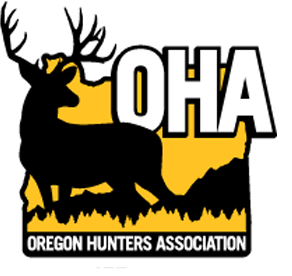 Tag numbers for 2025 reflect changes
Tag numbers for 2025 reflect changes
in big game population trends.
By Jim Yuskavitch
While there are no earth-shaking big game regulation changes for 2025, there are, as usual, a number of refinements and adjustments to address changing conditions such as big game population numbers or tweaking regs to make life a little easier for the hunting public, as well as new and deleted hunts.
Here’s a quick rundown of the main changes.
Deer
In the wake of an excellent 2023 hunting season, no changes are planned for the Western Oregon General Buck Deer Any Legal Weapon season. Harvest for the 2023 black-tailed deer rifle hunts saw a 9% increase in hunter numbers to nearly 70,000 and a colossal 47% jump in the overall harvest representing a 37% success rate. On the other hand, general season bow hunter numbers were down, with 8% fewer hunters and 26% decline in the overall harvest for a 13% success rate.
Controlled mule deer harvest for the 2023 season was 14,045 for all legal weapon hunters and 2,175 for muzzleloaders. This represented a 3% and 2% increase in harvest, respectively. The success rate for mule deer ALW hunters increased by 11% over the previous season to 47%, but declined by 5% to 39% for muzzleloaders. For bowhunters, harvest increased by 11% over 2022, for a success rate of 27%.
Perhaps the most important news for mule deer involves the updated Mule Deer Management Plan, which was approved by the Oregon Fish and Wildlife Commission in June 2024. Last updated in 2003, the new plan is the result of a decade of research by the Oregon Department of Fish and Wildlife to determine the factors behind the steady decline of mule deer populations in Oregon – a trend that is also occurring throughout the West. That includes habitat degradation, climate change, and migration corridors and connectivity.
OHA helped shape the new Mule Deer Plan with extensive input that resulted in a plan that will be more actionable, and OHA is eager to jump into assisting in its implementation, including the establishment of a new OHA Mule Deer Fund.
How to address those issues will have an impact on big game regulations and structure, which is mandated within the updated plan. While mule deer hunting regulations incorporating the plan’s recommendations won’t be implemented until 2026, ODFW will conduct discussions over the next year on the details for how regulations will be changed and implemented – something in which hunters will want to be sure to participate.
The few changes to deer hunts for the 2025 season include three new northeast Oregon white-tailed deer hunts – 158M Chesnimnus Private, 159 Snake River Private and 161 Imnaha Private. These hunts will offer 110 tags each with an any white-tailed deer bag limit. Hunters who harvest a white-tailed deer must have their animal tested for Chronic Wasting Disease by ODFW.
While Oregon has so far kept CWD at bay, there are documented infected free-ranging deer in Idaho along where the Snake River forms the boundary between the two states, as well as multiple documented cases in Washington and California.
In all, ODFW is increasing the number of controlled buck and antlerless deer tags by about 1% for 2025.
Updated population models using data including deer densities, adult and juvenile survival and buck ratios show that western black-tailed deer have ceased their decline and may even be increasing in some units. There is no official population estimate.
Oregon’s mule deer population is currently estimated at 155,100, and has declined 0.2% between 2023 and 2024. The good news is that the decline is less than the 2.5% drop in numbers since 2020, and may mean that the population is responding positively to recent mild winters, and wetter, cooler summers.
Elk
While there are no changes slated for Oregon general elk hunts, there are some changes in store for controlled elk hunts. These include deleting the Zumwalt #4 and North Juniper hunts, as they are no longer needed to address elk damage issues. A new hunt on private land in the Ukiah Valley is being added where there is an ongoing high level of conflict with elk and agriculture.
Overall, the number of controlled elk tags offered for 2025 will decrease by 2% from 2024. Some of the reasons for that decrease include fewer elk seen during monitoring surveys and bull ratios below management objectives in particular management units.
For the 2023 season, 89,494 hunters harvested 15,550 elk for an overall 24% success rate. The success rate for controlled hunts was 25%, and 20% for general season hunts. However, success rates for 2023 were a little lower than for 2022.
The Roosevelt elk population in western Oregon is struggling in some areas. Only seven of 18 wildlife management units are near or above management objectives. The western Oregon Roosevelt elk population is estimated to be 55,422, which is 78% of the management objective of 70,850. The Willamette, Applegate and Melrose units are elk de-emphasis areas and do not have management objectives.
In eastern Oregon, Rocky Mountain elk numbers continue to be healthy, with an estimated population of 61,577. Within the 29 management units with population data, 22 are at or near management objective, and overall 113% of the management objective for those units. The Maupin, Biggs and Columbia Basin units are elk de-emphasis areas and do not have management objectives.
Pronghorn
For the 2025 pronghorn season, ODFW will be offering 2,047 tags for 52 hunts, which is 25 fewer tags than the 2024 season.
Oregon’s pronghorn population is estimated to be 16,000 to 19,000 animals and is holding steady. Pronghorns are very sensitive to environmental conditions and habitat conditions, but in many parts of their range they have been seeing improved population numbers due to recent wetter summers and milder winters.
Bighorn Sheep
The 2025 season will see an increase in both California and Rocky Mountain bighorn sheep hunting opportunities, including one new Rocky Mountain bighorn sheep hunt. The new hunt is the 556 Wenaha hunt. This is a hunt that is shared among the states of Oregon, Washington and Confederated Tribes of the Umatilla Indian Reservation. Jurisdiction to allocate the tag rotates among those entities every three years, with 2025 being Oregon’s turn.
Overall, ODFW will be offering 136 bighorn sheep tags, including 80 California bighorn ram tags, 50 California ewe tags and six Rocky Mountain ram tags. These are offered over a total of 31 hunts – 4 Rocky Mountain bighorn hunts and 27 California bighorn hunts.
All five Rocky Mountain bighorn sheep tag holders successfully harvested an animal in 2023, along with holders of the special auction and raffle hunt tags. California bighorn sheep hunters had a 96% success rate, with a total of 94 animals harvested. An additional California bighorn was also harvested with a special tag for a terminally ill youth hunter
Oregon’s California bighorn sheep population is estimated at 4,000 to 4,200 animals in 32 herds. Rocky Mountain bighorn sheep numbers are estimated to be 900 to 1,100 in 11 herds. Some Rocky Mountain bighorn herds still suffer from respiratory disease problems and ODFW continues to monitor them, particularly the Lookout Mountain herd.
Rocky Mountain Goats
ODFW will offer 23 Rocky Mountain goat tags for 2025 in 13 hunts. Two tags will be available for non-resident hunters. For the 2023 hunt, 18 of 32 tag holders were successful for a 63% harvest success rate.
The Rocky Mountain goat population in Oregon is about 1,100 to 1,300 animals, with the largest population in the Elkhorn and Wallowa mountains. Their numbers have been stable or increasing over the past several years.
Bear and Cougar
Spring bear hunting regulations were especially controversial this year. ODFW received thousands of comments and 30 people testified before the Commission, both for and against. Thanks to support rallied by OHA and allies such as Howl for Wildlife, the Commission ruled to continue spring bear hunting in 2025, including an increase of about 2% in tags offered, along with a new bear hunt for youth hunters.
Those tag increases include for the 746A South Blue Mountains Hunt and the 752A Starkey-Ukiah Hunt for a total of 150 additional tags. The new youth bear hunt is the 717T Alsea-Stott Mountain youth hunt.
The 2023 spring bear controlled hunt harvest was 780 bears for an overall 17% success rate. In the general fall hunt, 1,420 bears were taken for an 8% success rate.
Oregon’s black bear population is estimated at a healthy 44,000, plus or minus 5,000. Harvest data compiled and analyzed by ODFW show that hunting is not negatively affecting the bear population over the long term.
No changes were made for cougar hunting in 2025. Hunter harvest for 2023 was 262. Another 182 were removed for damage control and human safety along with 24 for other mortalities such as vehicle strikes. The current estimated cougar population in Oregon is 7,040.
CWD Emergency Hunts
To be vigilant for Chronic Wasting Disease, emergency hunt rules will be expanded to permit emergency hunts when detection of the disease requires samples to be obtained or herd numbers need to be reduced to minimize spreading infection. This is a recommendation provided by the Oregon CWD Plan.
